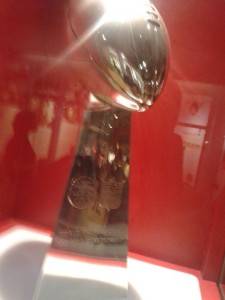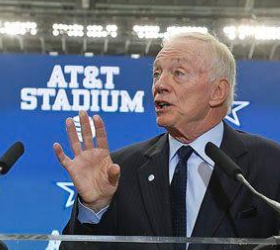The curious wording of a press release out today is making us wonder: Will in-stadium Wi-Fi be missing in action during the soccer World Cup next year in Brazil?
The thing that got us asking this question is the release today of news from Wi-Fi gear vendor Ruckus Wireless, which trumpets a deal for more than 360 Ruckus wireless access points, to be deployed in two of Brazil’s biggest soccer stadiums. But the release doesn’t mention the World Cup at all, and there is no date given for when the equipment may be installed.
While our guess (we are waiting for word back from Ruckus) is that there is some World Cup wireless rights deal that precludes supplying vendors like Ruckus from using the term “World Cup” in any announcements, the press release got us looking to see if any of the other stadiums that will be used in the month-long tourney already have or have plans to get Wi-Fi before the soccer starts. So far, we haven’t been able to find anything concrete that spells out whether or not Wi-Fi will be available at any of the 12 venues across Brazil. Our short history in covering this market tells us that if there isn’t a press release saying that Wi-Fi will be available, you can bet that it probably won’t be.
For the sake of the thousands of futbol fans who will no doubt be traveling to Brazil for the matches, we hope we’re wrong. But the best info we have found in a limited bit of Internet searching are a few articles from ZDNet’s Brazil Contributing Editor Angelica Mari. For the most part, the information seems to come from hopeful press releases, like this one about a plan for Sao Paulo to invest $22 million in a free Wi-Fi project, something Mari notes has been promised and not delivered many times before. In July Mari reported that the World Cup said it would have free Wi-Fi at all matches, but again, there were no specifics about deployments and her cautionary line, “But the actual ability of mobile providers to deliver is questionable,” should probably be taken as a pretty good warning that not all is well when it comes to Wi-Fi at the games.
For Ruckus, the deal to put wireless access points into two of Brazil’s biggest stadiums — the 71,000-seat National Stadium, also known as Estádio Nacional de Brasília, and Arena Octávio Mangabeira (also known as Arena Fonte Nova, depending on who you ask), a 50,433-seat facility in the city of Salvador — is another international win, and proof that Ruckus gear is passing the test when it comes to dense public facilities. But whether the gear be active in time for World Cup action is still unknown. UPDATE: Ruckus has confirmed that the gear is scheduled to be working by next June. Apparently we were also correct in assuming there is a rights deal that precludes the use of the term “World Cup” in any such announcements.
Unlike the London Olympics, which were amazingly the most un-wired games in history, the 2014 World Cup is looking like it might be a bit of a communications nightmare, given that local citizens like Mari routinely note that the country’s cellular infrastructure and services leave much to be desired.
Another possible scenario is that the Ruckus deal is just part of a bigger deal, where Ruckus would be one of several providers to the consortium of Latin America telecom providers (Claro, Oi, Telefónica, and TIM) who are in charge of World Cup communications. That might explain why a Ruckus release didn’t say World Cup, or mention other stadiums. Word on the street is that press announcements for World Cup infrastructure are being kept tight to the vest, so maybe we’ll hear more soon.








